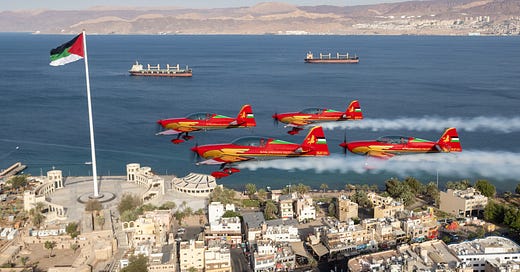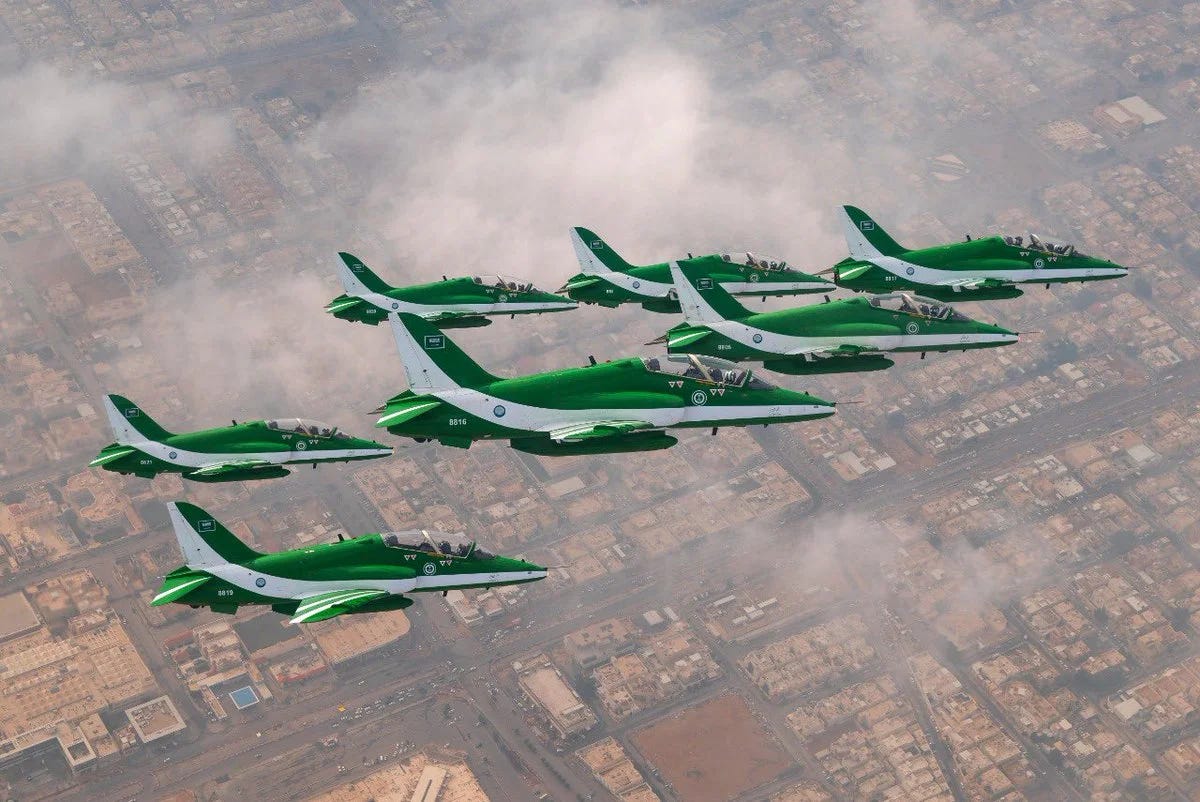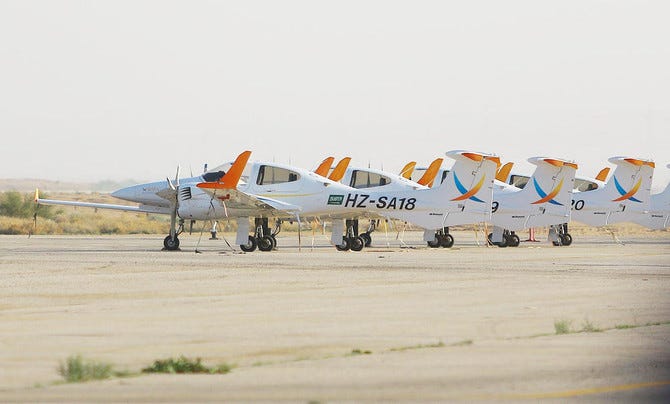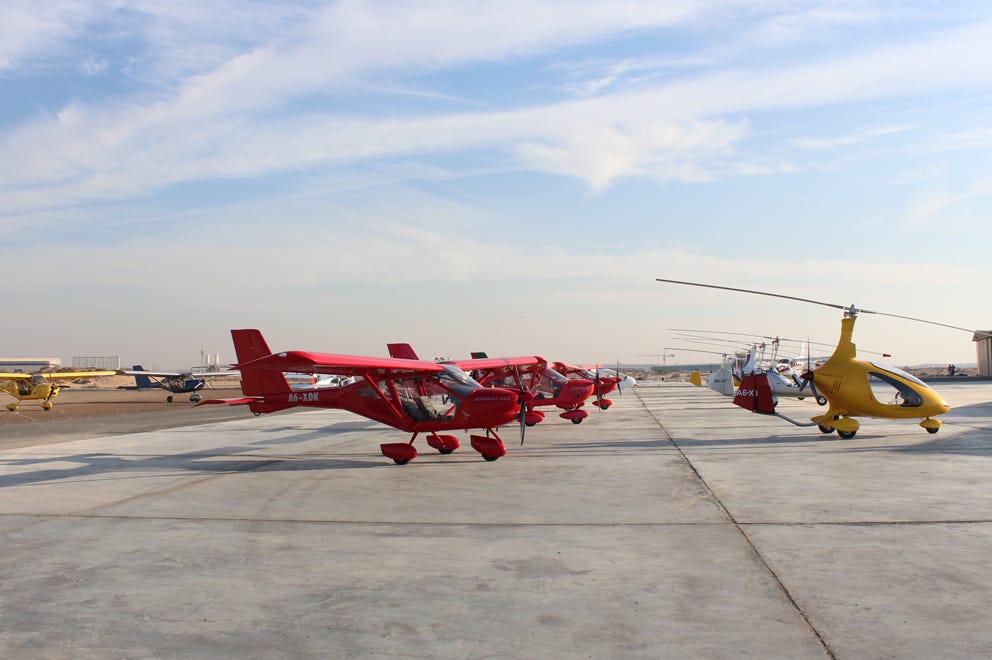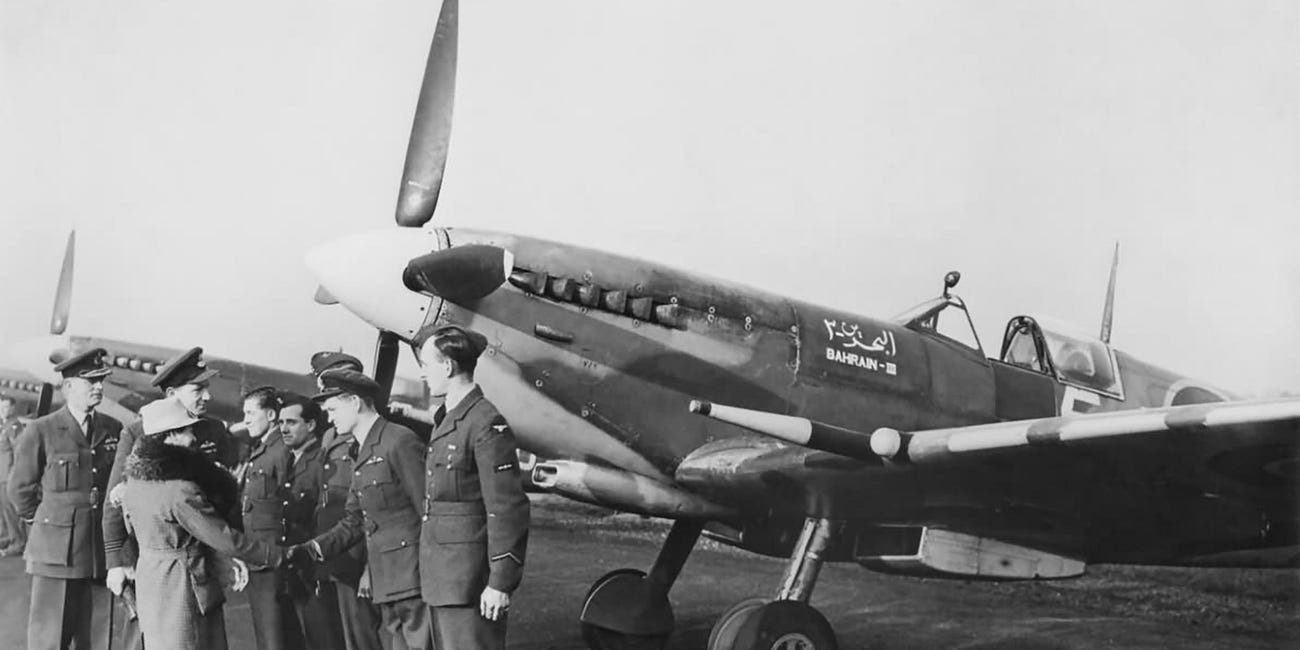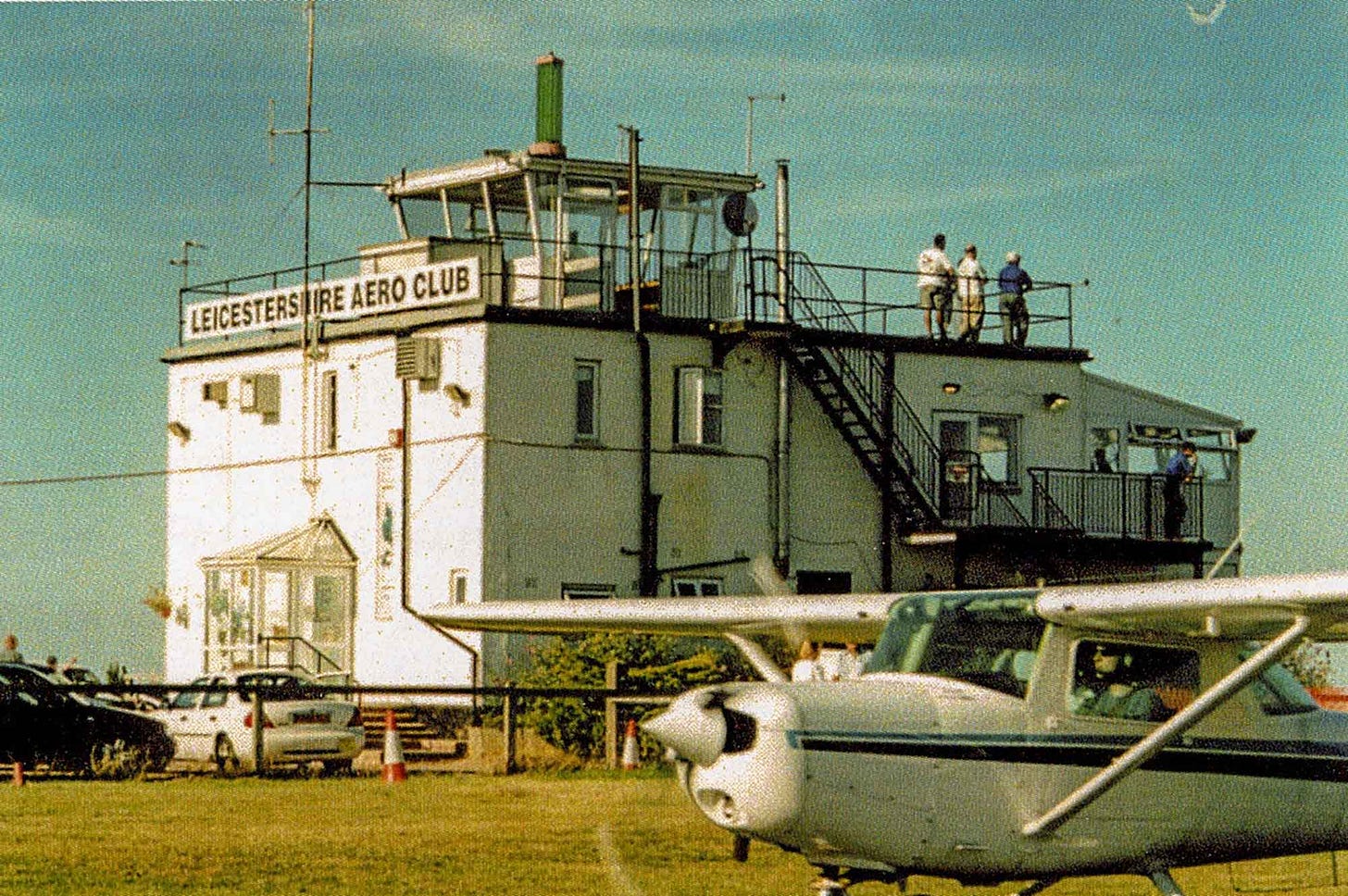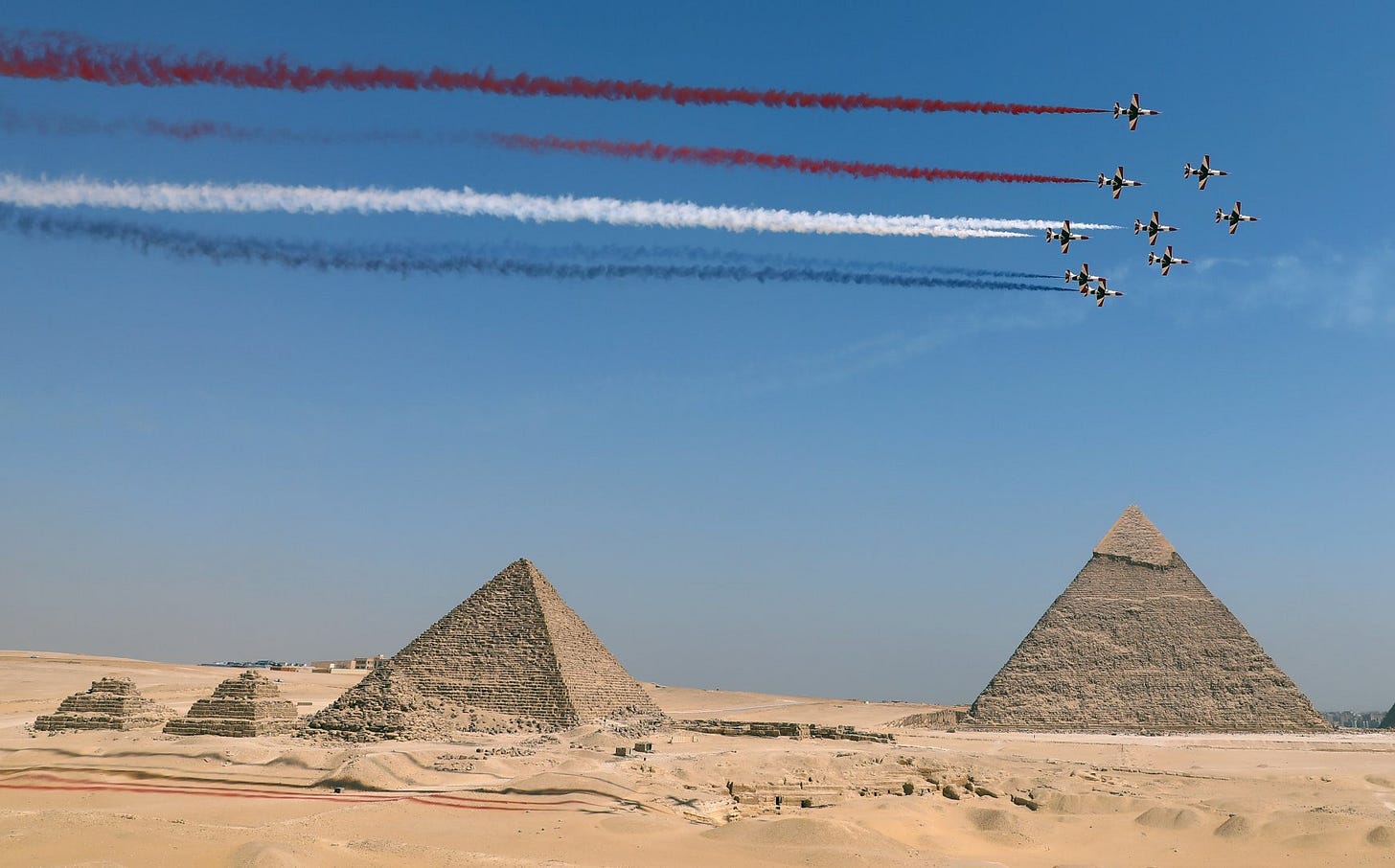The Gulf has never lacked for aircraft. Our skies are patrolled by the latest cutting-edge fighter jets, our runways hum with the latest widebodies from Boeing and Airbus, and our airports gleam like temples of global commerce. Despite all this aviation splendour, there is sadly one thing that is conspicuously missing from Khaleeji skies, its people. As I’ve detailed in a previous piece, Where the Desert Meets the Sky, the Gulf has a long history of commercial avaition, building empires of air travel, but that remains the only way to fly as we have failed to inculcate within us a culture of flight. Across Europe, it isn’t hard to find weekend pilots slipping into gliders, teenage cadets logging hours in Piper Cherokees, and flying clubs teaching young people how to stall and recover. In these places, aviation is not just a defence asset or a luxury commodity but a civic right, a passion worth pursuing. Here in the Gulf, by contrast, the sky is locked where one can’t learn to fly without military clearance. It isn’t easy to rent a Cessna, because there aren’t any, nor visit a flying club, because such things don’t exist. Even in the richest nations on Earth, the very idea of recreational aviation remains foreign, bureaucratised, and buried under layers of regulation, suspicion, and neglect.
The region has pilots, yes, but they are mostly foreign. The Gulf hosts airshows with imported teams, yet no child in Manama or Muscat can dream of taking to the skies without a passport, a scholarship, or a commission. The result brings a region with some of the highest per-capita incomes in the world with sadly not a single flying club accessible to the average citizen. This piece isn’t a lament, but instead is a call to reclaim our airfields, not just physically, but culturally. To imagine a future where Khaleeji children grow up not just watching planes as I did, but flying them too. Where we build our own pipeline of aviators, innovators, and aerobatic champions, not from defence contracts, but from dusty runways and weekend flying lessons.
The State of General Aviation in the Gulf
If one were to set out to map general aviation across the Gulf today, the chart would look less like a network and more like a handful of scattered dots floating in the regulatory ether. Despite the Khaleeji reputation for world-class aviation infrastructure, almost all of it is built for commercial or military purposes. General aviation, the world of hobbyists, private pilots, glider enthusiasts, bush flyers, and aerobatic hopefuls, remains not just underdeveloped, but largely nonexistent. Even in places where it exists in the Gulf, General Aviation is treated more as an afterthought and not an institution. It is informal, fragmented, and deeply constrained by overregulation, cost, and cultural perception. What should be a vibrant aviation subculture full of dusty runways, barbecue hangars, and weekend enthusiasts, is instead a sterile, heavily-guarded system run by the few, for the few.
Saudi Arabia
The Kingdom boasts a vast airspace, and more than a hundred airports, but most are off-limits to civilian hobbyists. The realm of General Aviation is slowly gaining popularity, which up until 2011 was governed by the Saudi Ministry of Defence, however the Saudi Aviation Strategy (SAS) as part of the govt’s Vision 2030 plans for 6 dedicated general aviation airfields and 9 more dedicated GA terminals in airports across the kingdom, though the policy seems to be geared more towards higher end business jets than light aviation. In a bid to promote aeronautics to the Saudi public, former astronaut Prince Sultan bin Salman al Saud (who celebrates his 40th anniversary of spaceflight this week) founded the Saudi Aviation Club in 2007, headquartered at Thumamah Airport near Riyadh. The airfield stands out as a rare example hosting light sport flying, skydiving, and airshows, offering a gateway to the SAC’s members to take to the skies without being tangled in bureaucratic clearance procedures.
United Arab Emirates
The UAE fares slightly better in this regard, partly due to the autonomy the constituent emirates have allowing for passion projects led by its rulers giving way to general aviation along the pirate coast. Ras Al Khaimah Airport has seen occasional GA traffic, while Al Bateen Executive Airport in Abu Dhabi once flirted with the idea of private aviation before being overtaken by corporate jets. Microlight activity exists, particularly in Emirates like Umm Al Quwain (AeroClub), Al Ain in Abu Dhabi (Emirates Falcons Club) and Ras Al Khaimah (Jazeerah Aviation), but these are niche communities and not national initiatives. There are no flying clubs in the Western sense, just companies that offer the occasional sightseeing and skydiving tours for those already inside the inner circles of access, and from the experience of Umm Al Quwain Aeroclub, can easily be decommissioned and torn down to make way for bigger projects like hotels and resorts.
Qatar
Despite its rising profile in aviation and acquisition of advanced trainer fleets, Qatar had up until very recently no known civilian flying club or light aviation network. General aviation remains highly centralised, likely due to tight airspace control and the country’s compact geography. A flying club was started by enthusiasts in 2008, operating microlight aircraft from the modest Umm al Shkot airfield located 35km northwest of Doha, mainly offering sightseeing services of scenic highrises of Doha and Lusail. Interestingly, there used to be an airfield in Al Khor that would host annual fly-ins for general aviation aircraft from 2008 until it was stopped in 2018 in the run up to the 2022 FIFA World Cup as one of the stadiums was built at the northwestern end of the runway at Al Khor Airport, rendering the airfield unusable.
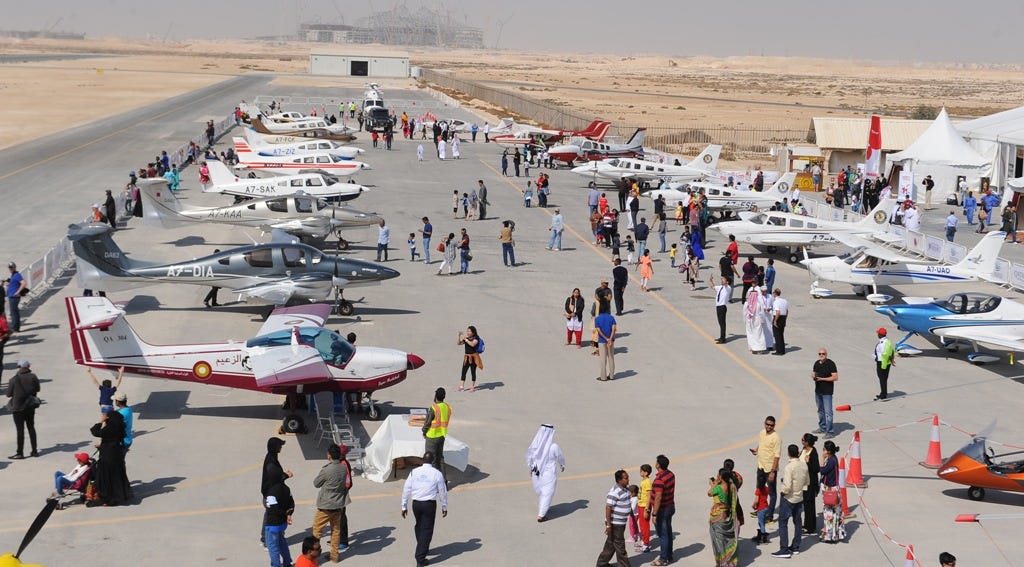
Bahrain, Kuwait & Oman
Despite being home to one of the earliest airfields in the region, with aviation playing a major role in their 20th-century story, there is sadly neither a single functioning civilian flying club, nor any light aircraft rentals, gliders, or pilot-owned hangars. Bahrain’s Airports in Muharraq, Sakhir and the south remain a purely commercial and military domain and a preserve of the Royal family. Meanwhile, one can understand that in the tense geopolitical situation that we live in today, why the Directorate General of Civil Aviation in Kuwait may choose to ban unlicensed flying, but the decision to ban all kinds of licensed recreational flying in the name of national security feels a bit overkill. Further south, Oman’s rugged terrain and wide spaces should make it a GA paradise, and yet there is no known civilian flying club, and even licensed pilots find difficulty accessing light aircraft for personal use. The Sultanate operates a modern air force and has the airspace, but the civilian side remains embryonic. If you are interested in indulging in the rich aviation history of these countries I suggest reading my previous piece on the topic:
Airfields of the Empire
Long before Emirates emblazoned its name on the world's jetways and Doha became a layover between continents, the skies of the Gulf were carved out by imperial ambition. Aircraft of the Royal Air Force first touched down in the Arabian Gulf as an enforcer of British policy, armed not with bombs alone but with bureaucracy in flight. The RAF's mandate was…
What are Flying clubs and why they matter
Flying clubs are the soul of grassroots aviation, where small, civilian-run communities allow ordinary people to come together to learn, fly, maintain aircraft, and keep the spirit of flight alive. They are not elite aviation academies or playgrounds for private jet owners, but are instead local, affordable, and often volunteer-driven centres of practical skill and quiet wonder. A flying club might consist of a modest strip of tarmac or desert gravel, a few trusty Cessnas or ultralights, a hangar that probably leaks in the rain, and a dozen enthusiasts who believe the sky is not a place reserved for uniforms and billionaires. These are the places where real aviation culture is born, where teenagers logs their first solo flight under the eye of a retired airline captain or where a mechanic teaches a group of students how to rebuild a Rotax engine. This is a place a university engineering team could build a kitplane over weekends and holidays — there are many such examples of this in Europe and North America. Flying clubs are not just flight schools; they are community hubs, oral history centres, and launchpads of national potential.
Crucially, a flying club is where nations build depth by producing civilian pilots who can be mobilised in emergencies, trained in search-and-rescue, medevac, firefighting, or logistics. They feed into the wider aviation ecosystem, into drone operations, STEM education, tourism, and aerospace entrepreneurship. The best aerobatic pilots in the industry have nearly all started here, looping over cow pastures in clapped-out trainers long before they flew national colours. From the Patrouille de France to the Red Arrows, every top-tier team owes its roots to humble beginnings in clubs like these. Even culturally, flying clubs punch above their weight. They turn pilots into local icons, not distant figures in mirrored sunglasses, but people from the neighbourhood, from the same school, mosque, or village. In doing so, they transform flight from a state-owned spectacle into a civic aspiration. The sky stops being foreign and starts to feel like home.
Grounded Potential: Why the Gulf Has No Wings of Its Own
A trip to the Gulf reveals a subtle yet tragic distinction, that the region has no shortage of aircraft, but it lacks aviation. The reasons are many, but they all orbit the same core problem: an ancient bureaucratic system that makes flight impossible for the individual. The skies are tightly regulated, often seen as a national security domain rather than a shared natural space, where flying a microlight can require as many permits as flying a Boeing. Bureaucracy rules the skies like a jealous monarch, and the result is a culture where personal flight is viewed as dangerous, unnecessary, or elitist. Infrastructure is another wound where the Gulf being vast and open as it is, has failed to seed even a skeletal general aviation network. As discussed previously, this is a region that has built palatial terminals and mile-long runways, but almost no small airfields, no rural strips, and no flying clubs. It’s not as if we lack the space or resources, we lack will and vision. Aviation is either a multi-billion dollar airline enterprise or a military asset, and there is nothing in between.
In the ensuing vacuum, aviation becomes mythologised, something other people do, somewhere else. The sky becomes ornamental, not participatory. Worse still, there's no market ecosystem to break the cycle. There are no aircraft to rent, no instructors to hire, no light aviation maintenance shops, no second-hand aircraft market. Insurance policies are written for Gulfstreams and not kitplanes. A Gulf citizen might have the money, interest, and intellect to fly, but no viable pathway to do so. The system punishes passion with bureaucracy, cost, and cold shoulders. The irony is brutal: this is a region of oil wealth, space ambitions, and cutting-edge tech, but a schoolboy in Serbia has more chance of becoming a pilot than one in Sharjah. If the Gulf is serious about aerospace sovereignty, about innovation, about youth development and STEM pride, then the time has come to break open the skies. Not just for defence, or display, but for the people.
If the Gulf is to truly take flight, not just in terms of GDP and glossy terminals, but in culture, sovereignty, and citizen spirit, we must make the sky accessible again. That starts with policy: demilitarising low-altitude airspace, simplifying civilian pilot licensing, and recognising flying clubs as pillars of national development, not threats to it. A modular airstrip, with a modest runway, hangar, fuel station, and training shed, costs a fraction of a business jet, yet could give birth to a thousand pilots. These hubs should dot the deserts, the suburbs, the university towns providing small gateways to a big dream. But it’s not just about infrastructure as the soul of aviation lies in its people. That means scholarships from national carriers, school programmes that introduce the physics of flight, summer camps that let youth touch the controls, and media that celebrates pilots as heroes, not just employees. The region needs mechanics, kit builders, insurance brokers, mentors. Piece by piece, a market will form, and with it, a movement. All that’s needed now is the will to open the hangar doors.
Flightpath to Identity: Aerobatics as National Culture
The next section is one that this piece was originally about, as when I started writing earlier this week it started out as a survey of aerobatic display teams in the Arab World, but then quickly transitioned into a wider piece on the state of general aviation in the region today. Perhaps now would be a decent time to discuss that. Across the Arab world today, five national aerobatic teams carve trails of smoke across the sky as symbols of precision, pride, and power. Egypt’s Silver Stars, flying their Chinese-Pakistani Hongdu K-8E Karakorum jet trainers, represent the oldest of these, born in 1974 shortly after the Yom Kippur War at a time when Cairo aimed to lead the region in aerospace capability. While their routines are less flamboyant than European counterparts, they are precision-driven, steeped in military discipline, and a staple at Egyptian airshows. Their use of the K-8E reflects Egypt’s long history of assembling and modifying imported aircraft, stretching back to the Helwan HA-300 programme, a topic I’d love to discuss in detail someday.
Over in the Maghreb, Morocco’s Marche Verte, with their sleek French-built CAP-232s, named after the iconic “Green March” of 1975, is a military-public relations unit under the Royal Moroccan Air Force. Their aircraft are agile, piston-powered thoroughbreds, pure-blood aerobatic machines, not converted trainers. Trained by the French Air Force’s Patrouille de France, they stand out as the most ‘sport aviation-like’ team in the Arab world. Back in the Arabian Peninsula fly the Saudi Falcons, created at the height of Saudi military modernization, the Falcons are modelled almost exactly on the Red Arrows: same aircraft lineage, same green smoke trails (where the Reds use red), same tight diamond formations. Their displays combine precision flying with nationalist pageantry, and they’re frequent stars at international airshows. Despite the glitz, their formation is purely military where pilots rotate in from frontline Hawk squadrons and civilian pilot culture is entirely absent from the equation. Jordan’s Royal Jordanian Falcons, meanwhile, are a unique blend, military-sponsored but flown in part by civilian aerobatic pilots in Extra 300s, ambassadors in both name and purpose, performing at over 300 airshows worldwide since their inception in 1974, and reconstituetion in 2004. They also boast one of the most photogenic liveries in the region and one of the most exportable brand identities. And then there’s the UAE’s Al Fursan, the newest of the lot, dramatic, gilded, and Italian-trained, flying MB-339s in perfectly choreographed shows designed to dazzle. They operate under a distinctly prestige-focused doctrine: showcasing wealth, ambition, and sovereign air power, but not necessarily pilot development.
What binds these teams isn’t just aviation, it’s structure. Every one of them is government-run, top-down, foreign-trained, and entirely dependent on military infrastructure. Their purpose is often more public relations than pilot development. These aren’t bad things, necessarily, but they aren’t scalable as you don’t build a national flying culture by decree. And that’s where the poetic twist in the flight path emerges as aerobatic teams are not the origin, they are the fruit. The root is grassroots: flying schools, general aviation, glider clubs, and light aircraft maintenance sheds. Imagine a young Kuwaiti teen joining the Red Bull Air Race World Championship not through a military pipeline, but through a civilian flying club. Imagine an Omani formation glider squad practising high above the Dhofar hills. Imagine a club-built kitplane doing barrel rolls above the Rub' al Khali. This is no fantasy, it’s just a missing infrastructure.

This brings us, inevitably, to Bahrain, a nation with deep aviation heritage, once home to pioneering Gulf Air pilots and some of the earliest jet trainers in the region. Yet today, Bahrain has no flying club, no recreational general aviation presence, and no aerobatic display team. But this absence is not a weakness, it is a blank canvas. Bahrain doesn’t need to mimic the existing model, when it can create something better: a civilian-first flying culture that births its own team from the ground up. Picture a Bahrain National Flying Club, nestled near the southern desert, hangars filled with Cessnas, Diamond trainers, maybe even a few Extra 300s gleaming beneath the sun. This could be a place where the next generation of aviators is trained not just for the air force, but for medevac, surveying, commercial aviation, and yes, pure aerobatics. From this community could emerge Bahrain’s answer to the Red Arrows, not as a government PR project, but as a grassroots team. Call them Team Dilmun, red and white smoke trailing over the Gulf, flown by Bahraini men and women, proudly civilian, proudly national. Because ultimately, the goal isn’t aerobatics, it’s aspiration. The loop, the roll, the perfect diamond formation in the sky, they are symbols of discipline and of imagination. A nation that lets its people fly is a nation that believes in their potential.
Unlocking the Skies to Build a Gulf Aviation Culture for Tomorrow
The Gulf has conquered the world’s air corridors with flagship carriers and cutting-edge fleets. But beneath the gleam of terminals and military jets lies an empty hangar, where a civilian flying culture should be. For all the pride in commercial success and military strength, the region is yet to nurture the most vital layer of aviation: the people’s sky. Flying clubs are not indulgences for the wealthy or eccentric, they are the lifeblood of any sovereign aviation culture. They train tomorrow’s airline captains and aerobatic stars, and they give birth to a nation’s confidence. They teach discipline, ingenuity, resilience. They turn airspace from a controlled void into a civic commons, a place where imagination and identity both take flight.
Today, that promise is throttled. Across the region, general aviation is tangled in red tape, starved of infrastructure, and kept out of reach. In doing so, we have handed the sky to others, foreign trainers, foreign aircraft, foreign ideals, while our own youth remain earthbound. The longer we wait, the further we fall behind. Yet the solution lies within reach. Reform our policies to open the low skies. Build modest airfields, not monuments. Let national airlines seed flying clubs, and let civil society celebrate the pilot as much as the poet or the engineer. Reignite the cultural flame that once made the Arab pilot a figure of wonder and pride. From that fertile ground, real aerobatic teams can emerge, not showpieces for state power, but expressions of homegrown excellence. Bahrain’s dream of such a team is not just a national aspiration, it is a regional call to action. To build a future where the red and white smoke trails are not just symbols of sovereignty, but of self-belief. Because when a nation flies together, it rises in more ways than one. The sky is not a luxury, it is a canvas, a classroom and a proving ground. And if the Gulf truly seeks to be sovereign in spirit, not just in airspace, we must open the hangars, unlock the skies, and teach our people to fly.

